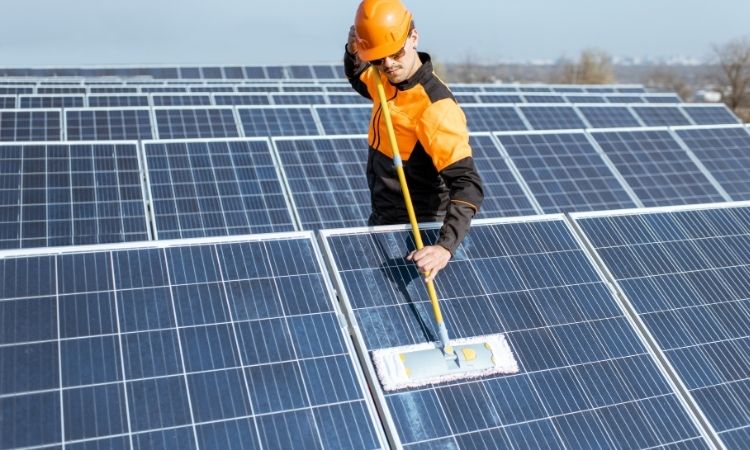As the world increasingly turns to renewable energy sources to power homes, businesses, and industries, the need for effective renewable electrical maintenance has never been more critical. Renewable energy systems, including solar, wind, and hydroelectric power, are at the forefront of the global shift toward sustainable energy solutions. However, like any technological system, these renewable energy systems require regular maintenance to ensure they perform efficiently and continue to contribute to a sustainable future. In this article, we will explore the importance of renewable electrical maintenance, the key factors that contribute to system performance, and why it’s essential for both the environment and the economy.
What is Renewable Electrical Maintenance?
Renewable electrical maintenance involves routine tasks to ensure the efficient operation of systems powered by natural resources like sunlight, wind, and water. Regular maintenance is crucial for optimizing energy production, extending the system’s lifespan, and minimizing downtime. Solar panels require cleaning and inspections, while wind turbines need mechanical and electrical checks, lubrication, and alignment adjustments. Hydroelectric systems demand routine monitoring of water flow, mechanical parts, and electrical connections. Regardless of the technology, the primary goal is to maintain reliable, efficient, and long-term energy production, preventing unexpected breakdowns and ensuring continuous delivery of sustainable energy.
Industry Insights: A Glimpse into the Future of Renewable Energy Maintenance
According to Expert Market Research, the global demand for renewable energy systems continues to rise, highlighting the importance of efficient renewable electrical maintenance. As more countries and regions adopt renewable energy solutions, the need for expert maintenance practices grows. Innovations in digital technologies, such as predictive maintenance using IoT sensors and AI, are shaping the future of renewable energy system upkeep. These advanced techniques are driving efficiency, reducing operational downtime, and ensuring a longer lifespan for renewable systems. This trend is particularly important as governments and businesses aim to meet sustainability goals, pushing the demand for reliable, well-maintained renewable energy infrastructure.
Why is Renewable Electrical Maintenance Important?
Regular maintenance is crucial for the optimal performance of renewable energy systems. Over time, dust, dirt, and wear can cause renewable energy systems to operate less efficiently. Regular cleaning and maintenance help to maximize energy production, ensuring that the system works at full capacity. Like any machinery, renewable energy systems experience wear and tear. By performing routine checks and maintenance, such as lubricating moving parts or replacing worn components, you can extend the lifespan of the system and delay costly replacements. Preventative maintenance is often more cost-effective than reactive repairs. By identifying and addressing potential issues early, you can avoid expensive breakdowns and repairs.
Types of Renewable Electrical Maintenance
The type of maintenance required depends largely on the specific renewable energy technology. Solar panels, for instance, require regular cleaning to remove dust and debris, which can obstruct sunlight and reduce efficiency. Wind turbines require more intensive maintenance due to their mechanical components. Routine inspections of turbine blades help detect cracks or wear, and mechanical parts need to be lubricated to prevent friction that could lead to system failure. Hydroelectric systems, which involve large turbines and reservoirs, require periodic checks of their water flow systems and mechanical parts to ensure consistent operation.
North America Renewable Electrical Maintenance
In North America, renewable energy adoption is rapidly growing, with the U.S. and Canada leading the way. Wind power is prevalent in states like Texas, Iowa, and Oklahoma, requiring regular turbine maintenance for optimal performance. Solar energy is also expanding in California and Arizona, where consistent upkeep ensures efficient power generation. In Canada, hydropower is a major energy source, with large-scale hydroelectric plants requiring frequent maintenance to maintain reliable output. The cold climate adds challenges, with freezing temperatures affecting turbines and water flow systems, making maintenance even more critical for consistent power generation.
The Future of Renewable Electrical Maintenance
As the global demand for renewable energy grows, so does the need for innovative maintenance solutions. The future of renewable electrical maintenance will likely involve the integration of advanced technologies, such as artificial intelligence (AI) and the Internet of Things (IoT). These technologies can provide real-time monitoring of renewable energy systems, allowing for more precise and timely maintenance interventions.
Smart sensors embedded in renewable energy systems can detect issues before they become critical, enabling proactive maintenance. Drones and robots are also being explored for inspecting hard-to-reach parts of wind turbines and solar panels. These innovations promise to reduce maintenance costs, increase efficiency, and extend the lifespan of renewable energy systems.



